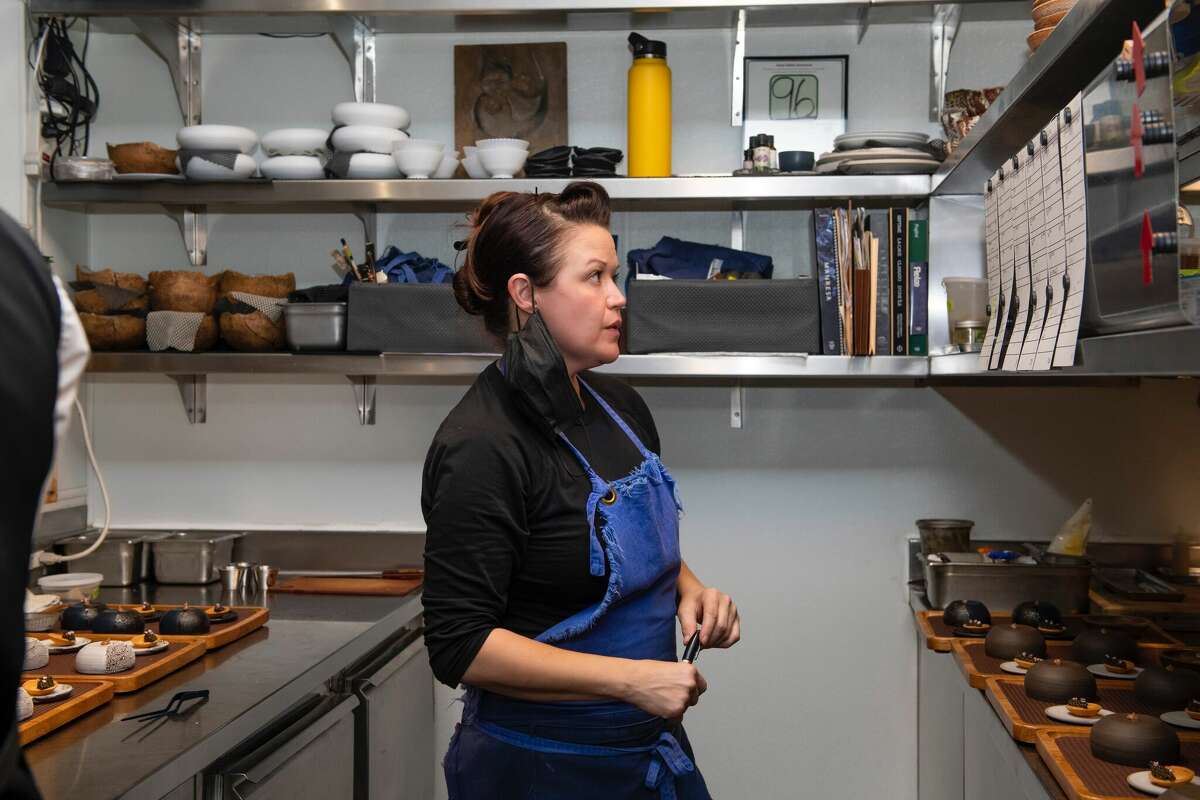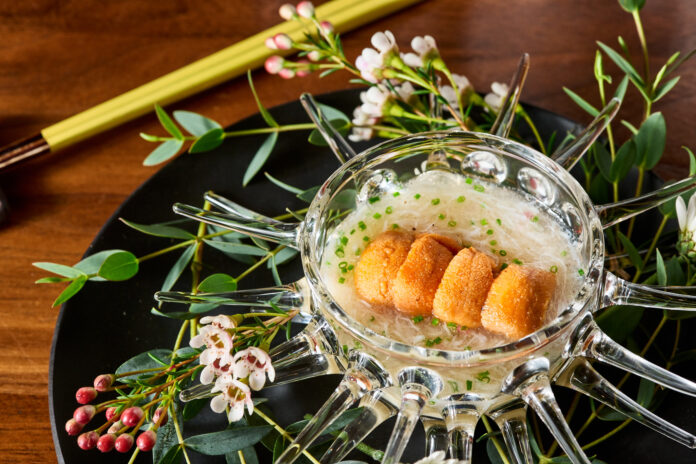When chef René Redzepi announced that he was closing his seminal Copenhagen fine dining restaurant Noma at the end of 2022, the news sent shock waves throughout the culinary world — questioning whether fine dining was in the midst of a crisis.
“It’s unsustainable,” Redzepi told the New York Times. “Financially and emotionally, as an employer and as a human being, it just doesn’t work.”
San Francisco, a city densely populated with fine dining restaurants, has had its share of recent high-profile closures. Michelin-starred AL’s Place and Coi notably closed last year, along with David Kinch’s three-Michelin-starred Manresa, which shuttered after 20 years in Los Gatos. Last month, Michelin-starred Hi Felicia abruptly closed after a short stint in Oakland.
While the reasons behind each closure varied, collectively they raise questions about the stability of the area’s fine dining scene, as well as issues like fair wages, healthy work environments and employee retention. In the time since Redzepi’s claim, SFGATE asked restaurateurs to reflect on the state of fine dining in San Francisco and its changing landscape. Those we spoke with believe fine dining is still viable — with some modifications.

Kim Alter of Nightbird making sure tickets are all accounted during dinner service.
Courtesy of Adahlia Cole

Nightbird is located at 330 Gough St. in San Francisco.
Adahlia Cole
Kim Alter, chef and owner of Nightbird in San Francisco’s Hayes Valley, has worked in a range of kitchens, which has helped her in decisions for her own restaurant. (Courtesy of Adahlia Cole)
Kim Alter, chef and owner of Hayes Valley’s high-brow Nightbird, believes Redzepi’s view on fine dining is a “blanket statement.” Alter’s culinary background has taken her from positions at taquerias and fast-casual restaurants to prominent kitchens inside Acquerello, Manresa and La Folie, among others. Her lengthy career has taught her that every restaurant model has its own set of challenges.
“When people decide to close, maybe they’re just ready,” Alter said. “My restaurant is sustainable. I’ve made a profit, I’ve paid off my investors during the pandemic and I found ways to hustle.”
One of the biggest challenges in fine dining kitchens is the high-pressure environment and the stress it can put on employees. TV shows like “The Bear” depict those sometimes toxic conditions, and movies like “The Menu” inflate the image of the aggressive head chef to violent proportions. In a 2015 essay, Redzepi admitted to yelling and even pushing staffers.

An owl statue sits in the front window at Nightbird in San Francisco on March 30, 2018. Chef and owner Kim Alter has worked to foster a healthy work environment at her restaurant.
Michael Short / Special to The Chronicle 2018Alter said she has made essential changes since opening Nightbird in 2016 to foster a pleasant work environment. She makes sure every stage, or intern, is paid, has reduced long work hours and has focused on the mental well-being of her team.
“A lot of people built their businesses on the backs of free labor, and it’s looked down upon now because workers have voices,” she said. “There are a lot of bad players, … and it’s rooted in the system of our industry, … but there are so many people who have been changing that in fine dining.”
Alter has seen it all in restaurant kitchens. She says that while she believes certain high-pressure moments served as learning experiences and shaped her into a better chef, she doesn’t want her staff to undergo poor treatment. Nightbird staff members are given mental health days each month as one way she hopes to create a better system at her business.

Lazy Bear is located at 3416 19th St. in San Francisco.
Courtesy of Lazy Bear

Lazy Bear is located at 3416 19th St. in San Francisco.
Courtesy of Lazy Bear
Lazy Bear in San Francisco has seen demand remain steady since 2009, even during the pandemic. (Courtesy Of Lazy Bear)
David Barzelay, chef and owner of Lazy Bear, shared that his two-Michelin-starred restaurant has been profitable since it opened in 2009. While colleagues noticed inconsistencies with reservation bookings that coincided with mass tech layoffs, Lazy Bear reservations remained in demand, according to Barzelay. He shared that in the 14 years that Lazy Bear has operated, it has sold out of reservations every night.
“We were able to reopen during the pandemic and found that demand was stronger than it had ever been,” Barzelay said. “It felt like people were willing to spend money on dining.”
Like Alter, Barzelay has taken steps at his restaurant to ensure its longevity, which includes having better communication with his team and paying them for every hour they work overtime. When he dove headfirst into the restaurant world, he said, it wasn’t unusual for team members at some of the restaurants he staged in to put in 16-hour workdays. At Lazy Bear, back-of-house workers can sometimes work more than eight hours — but it’s closer to a 10- to 12-hour shift, Barzelay said.

Ray Lee, chef and owner of Akikos in San Francisco, has made changes to benefit his business, such as switching to a prix fixe menu and increasing food quality to justify the cost of his menu.
Garrett RowlandRestaurants around the country were upended during the pandemic when chefs and kitchen staff left the culinary world for greener pastures. It was a move that exacerbated an already strained labor market. Leading up to opening the new location of revamped sushi restaurant Akikos, owner Ray Lee knew that a large-scale restaurant with a huge team was no longer viable. So he trimmed his staff of 40 to a crew of 15 that works at the new Akikos at 430 Folsom St.
“One of my mentors gave me simple advice and said, ‘Ray, you just have to control what you can control.’ And ever since then, I’ve been running my business with a small team. I think that’s really key,” Lee said.
Last February, Lee switched from a la carte to a prix fixe menu after noticing that business was unpredictable. He decided to invest in his restaurant by increasing food quality and improving service to justify the cost of his menu. While Lee says he thinks fine dining will never return to its pre-pandemic levels, he reasons that the new changes made at Akikos have been beneficial.

Akikos is located at 430 Folsom St. in San Francisco.
Garrett Rowland

Nightbird is located at 330 Gough St. in San Francisco.
Adahlia Cole

Lazy Bear is located at 3416 19th St. in San Francisco.
Courtesy of Lazy Bear
The owners of Akikos, Nightbird and Lazy Bear in San Francisco have faith in the fine dining industry, believing in its sustainability. (Courtesy of Akikos/Nightbird/Lazy Bear)
Each restaurateur shared that operating their business post-pandemic has come with its own set of challenges, but the hurdles also helped nudge restaurant leaders to make better choices. Increased pay is one of them. Lee shared that he tries to get his staff at six-figure salaries. Barzelay also shared that better pay for back-of-house workers is “arguably a good thing.”
While there isn’t a playbook with all the answers to guarantee the success of a restaurant, Lee, Barzelay and Alter have made strides to eliminate the old ways of handling a business and give fine dining a better reputation while they’re at it.
“Fine dining restaurants have gotten a bad name, and some of them deserve a bad name, but there are a lot of people out there trying to do right,” Alter said. “And in San Francisco, it’s a lot of us.”



